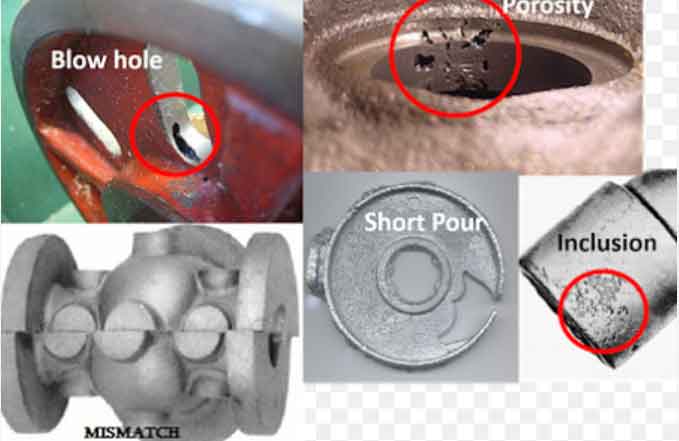Metal casting is a widely used manufacturing process for creating complex metal components. However, it is susceptible to various defects that can compromise the quality and functionality of the final product. Understanding these defects and implementing preventive measures is crucial for achieving flawless castings. This article provides an overview of common casting defects, their causes, and strategies for prevention.

1.Porosity:
Porosity refers to the presence of voids or gas pockets within the cast metal. It can result from several factors, including trapped gases, improper venting, or shrinkage. To prevent porosity:
- Use high-quality molding materials and ensure proper compaction to minimize gas entrapment.
- Employ effective gating and venting systems to allow gases to escape during casting.
- Implement vacuum or pressure-assisted casting techniques to reduce gas-related defects.
2.Shrinkage:
Shrinkage defects occur when the metal contracts unevenly during solidification, leading to voids or cavities. Common causes include inadequate feeding, improper riser design, or alloy selection. Prevention methods include:
- Use risers or feeders strategically to supply additional molten metal and compensate for shrinkage.
- Modify the casting design to ensure proper directional solidification and minimize localized shrinkage.
- Optimize the cooling and solidification rates through the use of chills or controlled cooling systems.
3.Cold Shuts:
Cold shuts are defects that arise when two or more metal streams fail to fuse completely, resulting in weak joints. Causes include insufficient pouring temperature, improper gating, or inadequate mold filling. To prevent cold shuts:
- Ensure proper pouring temperature to ensure complete fusion of molten metal streams.
- Optimize gating and runner designs to promote uniform filling and minimize metal stream fragmentation.
- Modify the mold cavity design to enhance metal flow and reduce the risk of incomplete fusion.
4.Inclusions:
Inclusions are foreign materials such as sand, slag, oxides, or refractory particles that become trapped in the casting. They can lead to weak spots or stress concentration points. Preventive measures include:
- Use high-quality molding and core materials to minimize the risk of sand-related inclusions.
- Implement effective filtration systems to remove impurities from the molten metal.
- Maintain proper furnace and crucible conditions to minimize oxide formation and inclusion generation.
5.Misruns and Cold Shots:
Misruns occur when the molten metal fails to completely fill the mold cavity, while cold shots are caused by solidified particles being entrapped in the casting. Common causes include improper gating, inadequate pouring time, or low metal fluidity. Prevention strategies include:
- Optimize gating and runner designs to ensure smooth and complete mold filling.
- Control pouring temperature, speed, and metal fluidity to promote proper mold cavity filling.
- Use appropriate pouring techniques such as bottom pouring or tilt pouring for complex castings.
6.Warpage and Distortion:
Warpage and distortion defects result from non-uniform cooling or inadequate dimensional control during solidification. Causes include improper mold design, residual stresses, or inadequate cooling systems. Preventive measures include:
- Employ optimized cooling and solidification control techniques, such as the use of cooling channels in the mold.
- Select casting alloys with lower thermal expansion coefficients to minimize distortion.
- Implement proper heat treatment or stress-relieving processes to reduce residual stresses.
Understanding the common casting defects and their causes is essential for producing flawless castings. By implementing preventive measures such as optimizing gating systems, improving mold design, and controlling pouring parameters, these defects can be minimized or eliminated. Continuous process analysis, effective quality control measures, and collaboration between casting experts and foundry personnel are vital for achieving defect-free castings and ensuring high-quality metal components.
